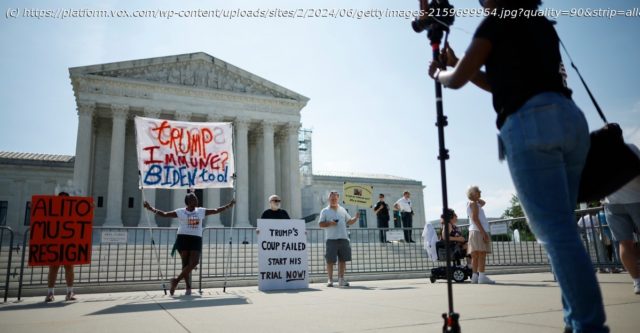The rules governing statutory construction often allow judges to choose how they want to read a law.
the Supreme Court ruled that a federal law, providing that anyone who “obstructs, influences, or impedes any official proceeding, or attempts to do so” commits a very serious federal crime, does not actually apply to everyone who obstructs, influences, or impedes an official proceeding.
Worse, the Court does so in a case involving a January 6 insurrectionist.
Approximately 330 people who allegedly participated in that insurrection are charged with violating the statute at issue in Fischer v. United States, including Donald Trump. So Friday’s decision could potentially undermine much of the Justice Department’s ability to prosecute hundreds of people who attacked the US Capitol.
On the surface, in other words, the Fischer decision could not play more into the growing narrative that the Supreme Court is a partisan institution that protects the interests of the Republican Party, and of Trump in particular. How else can one explain the Court’s decision that the anti-obstruction law does not do what it says it does?
The full story of Fischer, however, is slightly more nuanced. For one thing, while five of the justices in the majority are Republicans, Biden-appointed Justice Kentanji Brown Jackson joined these five in the majority. Trump-appointed Justice Amy Coney Barrett wrote the dissent, which was joined by the Court’s two remaining Democrats.
Get the latest developments on the US Supreme Court from senior correspondent Ian Millhiser.
And, while Chief Justice John Roberts’s majority opinion does not read the obstruction law according to its plain text, it does rely on rules governing statutory interpretation that the Court has, at least, applied in less politically charged cases.
Fischer, in other words, is less a case about justices tying themselves into knots in order to help out January 6 defendants than it is a case about how easy it is for judges to read a seemingly unambiguous law in multiple ways. The rules governing statutory interpretation are not clear, and it is not even certain when judges should apply one of those rules as opposed to a different one.






